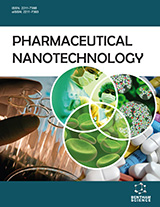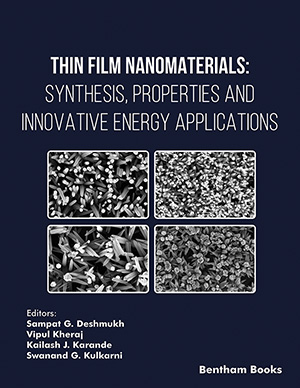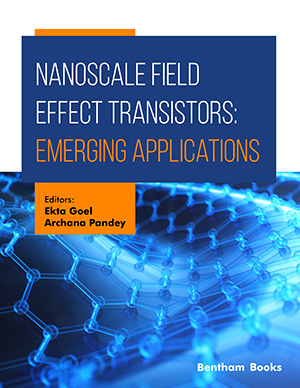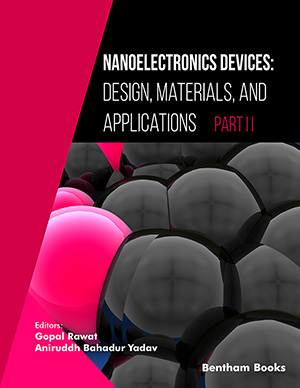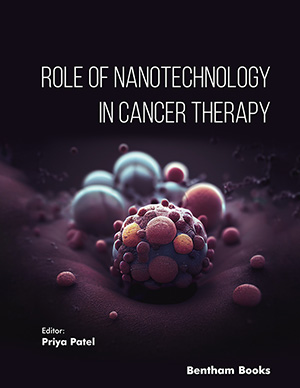
Abstract
In this paper we used Multi Wall Carbon Nanotubes (MWCNTs) containing 3% of residuals and impurities of Fe, Al, and Zn. MWCNTs, by virtue of Fe at their tips, are able to respond to the effects of external magnetic fields. We demonstrated that MWCNTs interact with PC12 cells without compromising their viability and differentiation with outgrowth of neurites. We also document that when exposed to a magnetic field, both undifferentiated and differentiated PC12 cells cultured in CNT-containing medium solution are able to move towards the magnetic source.
Keywords: Nanoparticles, magnetic materials, cell displacement, neuronal differentiation, anti-allodynia, antinociception, neuropathic pain, chronic pain, in vitro release, Franz diffusion cells, PLGA nanoparticles, amitriptyline, doxepin, imipramine, tricyclic antidepressants, Korsmeyer-Peppas
Current Nanoscience
Title: PC12 Interaction with Magnetic Nanotubes: Effects on Viability, Cell Differentiation and Cell Translocation Induced by a Magnetic Field
Volume: 7 Issue: 3
Author(s): Orazio Vittorio, Vittoria Raffa, Cristina Riggio, Andrea Pietrabissa and Alfred Cuschieri
Affiliation:
Keywords: Nanoparticles, magnetic materials, cell displacement, neuronal differentiation, anti-allodynia, antinociception, neuropathic pain, chronic pain, in vitro release, Franz diffusion cells, PLGA nanoparticles, amitriptyline, doxepin, imipramine, tricyclic antidepressants, Korsmeyer-Peppas
Abstract: In this paper we used Multi Wall Carbon Nanotubes (MWCNTs) containing 3% of residuals and impurities of Fe, Al, and Zn. MWCNTs, by virtue of Fe at their tips, are able to respond to the effects of external magnetic fields. We demonstrated that MWCNTs interact with PC12 cells without compromising their viability and differentiation with outgrowth of neurites. We also document that when exposed to a magnetic field, both undifferentiated and differentiated PC12 cells cultured in CNT-containing medium solution are able to move towards the magnetic source.
Export Options
About this article
Cite this article as:
Vittorio Orazio, Raffa Vittoria, Riggio Cristina, Pietrabissa Andrea and Cuschieri Alfred, PC12 Interaction with Magnetic Nanotubes: Effects on Viability, Cell Differentiation and Cell Translocation Induced by a Magnetic Field, Current Nanoscience 2011; 7 (3) . https://dx.doi.org/10.2174/157341311795542499
| DOI https://dx.doi.org/10.2174/157341311795542499 |
Print ISSN 1573-4137 |
| Publisher Name Bentham Science Publisher |
Online ISSN 1875-6786 |
Call for Papers in Thematic Issues
Advanced Inorganic Nanocomposites and their Emerging Applications
This special issue will highlight developments in the recent trends in the synthesis of metal oxides, nanoclusters, biomaterials, 2D nanomaterials, nanocrystals, nanocomposites, etc., and their applications in electrochemical systems, tissue regeneration, energy storage and harvesting, sensors, etc. The novelty of the methods in the chemical synthesis, as well as their ...read more
Advanced Nanotechnology in Forensic Science: Revolutionizing Fingerprint Identification and Crime Scene Analysis
This special issue aims to provide a comprehensive exploration of the innovative fusion between nanotechnology and forensic science. It aspires to bridge the gap between traditional investigative techniques and cutting-edge nanoscale applications, envisioning a paradigm shift in forensic analysis. By compiling the expertise of multidisciplinary experts, the book's objectives include ...read more
Graphene and 2D Materials for Energy Storage and Conversion.
This thematic issue will discuss the recent advances in graphene-based nanomaterials for different energy technologies. Graphene possesses a high surface area, and stable structure and exhibits many interesting electronic, optical, and mechanical properties due to its 2D crystal structure. Graphene is of both fundamental interest and suitable for a wide ...read more
Nanopathology; A Promising Approach for Targeted Cancer Treatment
Cancer is the most challenging diseases in treatment worldwide. Recently, the nanotechnology opened the gate for targeting the cancer as a promising therapy. The small size and exceptional properties of nanoparticles give it several advantages for easily targeting of cancerous cells. Furthermore, this advantage allows them to easily penetrate deeply ...read more
Related Journals
 4
4
- Author Guidelines
- Graphical Abstracts
- Fabricating and Stating False Information
- Research Misconduct
- Post Publication Discussions and Corrections
- Publishing Ethics and Rectitude
- Increase Visibility of Your Article
- Archiving Policies
- Peer Review Workflow
- Order Your Article Before Print
- Promote Your Article
- Manuscript Transfer Facility
- Editorial Policies
- Allegations from Whistleblowers
Related Articles
-
Biosafety of Herpesvirus Vectors
Current Gene Therapy Encountering and Advancing Through Antiangiogenesis Therapy for Gliomas
Current Pharmaceutical Design Nitric Oxide Releasing Nanomaterials for Cancer Treatment: Current Status and Perspectives
Current Topics in Medicinal Chemistry Nitric Oxide Control of Proliferation in Nerve Cells and in Tumor Cells of Nervous Origin
Current Pharmaceutical Design Resveratrol as a Potential Therapeutic Candidate for the Treatment and Management of Alzheimer's Disease
Current Topics in Medicinal Chemistry Bispecific Antibodies: An Innovative Arsenal to Hunt, Grab and Destroy Cancer Cells
Current Pharmaceutical Biotechnology Monoamine Oxidase Inhibitors as Neuroprotective Agents in Age-Dependent Neurodegenerative Disorders
Current Pharmaceutical Design Neuroprotective Role of Natural Polyphenols
Current Topics in Medicinal Chemistry Opioid Receptor Interacting Proteins and the Control of Opioid Signaling
Current Pharmaceutical Design Phosphoinositide-3-kinases as the Novel Therapeutic Targets for the Inflammatory Diseases: Current and Future Perspectives
Current Drug Targets Selegiline (l-Deprenyl) as a Unique Neuroprotective Agent for Chronic Neurodegenerative Disorders- A Lesson from MAO Inhibition
Current Medicinal Chemistry - Central Nervous System Agents Drug Combinatorial Therapies for the Treatment of KRAS Mutated Lung Cancers
Current Topics in Medicinal Chemistry Innovative Anthocyanin/Anthocyanidin Formulation Protects SK-N-SH Cells Against the Amyloid-β Peptide-Induced Toxicity: Relevance to Alzheimer’s Disease
Central Nervous System Agents in Medicinal Chemistry Recent Advances in Characterizing Natural Products that Regulate Autophagy
Anti-Cancer Agents in Medicinal Chemistry Immune-Inflammatory Responses and Oxidative Stress in Alzheimers Disease: Therapeutic Implications
Current Pharmaceutical Design Pathobiology and Prevention of Cancer Chemotherapy-Induced Bone Growth Arrest, Bone Loss, and Osteonecrosis
Current Molecular Medicine Voltage-Gated Calcium Channels as Targets for the Treatment of Chronic Pain
Current Drug Targets - CNS & Neurological Disorders SOCS6 Functions as a Tumor Suppressor by Inducing Apoptosis and Inhibiting Angiogenesis in Human Prostate Cancer
Current Cancer Drug Targets Bone Morphogenetic Protein-Smad Pathway as Drug Targets for Osteoporosis and Cancer Therapy
Endocrine, Metabolic & Immune Disorders - Drug Targets Nose to Brain Delivery of Nanoformulations for Neurotherapeutics in Parkinson’s Disease: Defining the Preclinical, Clinical and Toxicity Issues
Current Drug Delivery










